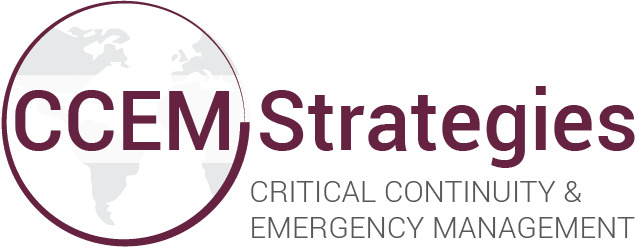More than just a first-aid kit
To ensure that your response and recovery plans can be implemented effectively, it is essential to equip your employees with easy access to supplies — the best way to do this is by providing workplace emergency preparedness kits. Emergency preparedness kits don’t just include first aid kits; they are comprised of other vital supplies to aid in the immediate aftermath of an emergency.
In the event of an emergency, will your staff need to stay overnight at the office? How will power outages impact your response plans? Or, what if there are road closures or transit is halted?
Get up-to-speed on what you need to get started. Here are the top 10 must-haves for your office’s emergency preparedness kit:
1. Water
Water is vital to everything you do. Depending on the temperature and level of exertion, humans can lose as much as 1.5 liters of water through sweat alone. To avoid this from happening, keep a supply of at least 2 liters of water per person per day. Include smaller bottles that can be carried in case you need to evacuate.
2. Non-perishable food
A disaster can easily disrupt utilities, so it’s important to keep a supply of non-perishable food that doesn’t require water to be cooked, and can be eaten on the run – think canned foods, energy bars and dried fruit and/or meats.
3. First aid kit
Ambulances and hospitals are going to be busy and clinics may be closed initially, so being able to provide initial medical assistance is essential. First aid kits include a variety of items that can help treat cuts, scrapes, burns and other ailments. This is a must-have for any emergency preparedness kit.
4. Manual can opener
When relying on non-perishable food items post-emergency, a manual can opener is a necessary tool.
5. Crank or battery-operated flashlight with extra batteries
In a disaster event, a power outage could easily disrupt electric operations. During Hurricane Sandy, it left millions of people without electricity. Having a crank or battery operated flashlight will help you to see where you’re going during times of darkness.
6. Crank or battery-operated radio
As mentioned above, it’s important to have a crank or battery-operated radio to ensure that you can listen to any emergency notifications and maintain situational awareness. Keeping extra batteries for both your flashlight and radio are a must too.
7. Cash in small bills and coins
Having small bills and coins will allow you to pay for supplies as credit card machines need power and phone lines to operate, as do bank machines. It also provides you the option of using the pay phone, in case cellphone networks are down, or your phone battery dies. During April this year, customers in Florida suffered an outage impacting cellphone customers.
8. Garbage bags
There is no other supply as versatile and useful as garbage bags. You can use it in various ways, such as a waterproof bag, food storage, water collection, rain coat and shelter. It also can be a port-a-potty. A definite must for your kit!
9. Dust masks
After an earthquake, there can be a lot of dust from crumbling concrete, or debris. During interface forest fires the smoke can affect one’s breathing, and in the days after, the stench of debris and garbage can be overwhelming, so having dust masks in your kit will help filter contaminated air. Remember the images after 9/11 of the people walking out of Manhattan covered in dust.
10. Basic tools
Keep basic tools such as rope, screwdriver, hammer, adjustable wrench and tape as part of your kit. You’ll never know what resources you might need to aid your office and personnel after an event, or to address any damage that may have occurred.
And of course — a hard copy of your emergency plan with contact information.
Now that you have added the top 10 must-haves to your kit, we are happy to offer a few guidelines for maintaining your emergency preparedness kit:
- Observe the expiration dates of food, water and batteries so you can renew and/or replenish your stock
- Input reminders on your calendar as a prompt to check your kits once or twice a year
- Include the cost of the emergency preparedness kit in your budget to ensure that there are adequate funds available to resupply or expand your kit
- Make sure that all employees read your company’s emergency plan, so that they are familiar with the procedures and know where the kits are stored, in case of an emergency
So there, you have it—the top 10 must-haves for your office’s emergency preparedness kits and the ways to maintain it.
We know each company is different - if your organization needs more information about other supplies to add to your office emergency preparedness kits, and how to recover after an event, we can help. We have worked with many organizations across multiple industries. Contact us now!

